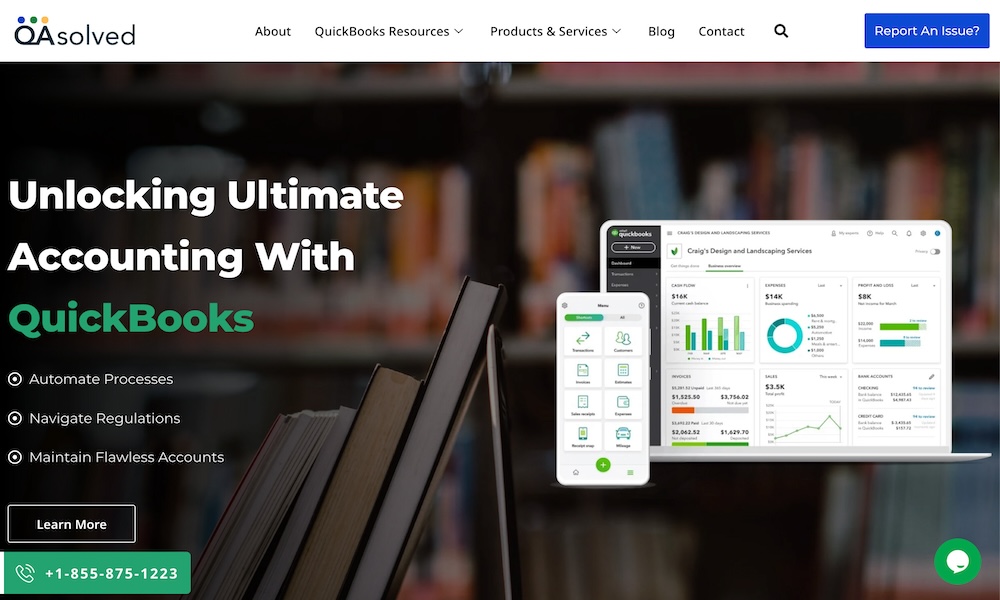Description
QuickBooks Desktop is a powerful accounting software program that is widely used by businesses to manage their financial accounting needs. This document provides a quick introduction and overview of how to get the most out of QuickBooks Desktop help
Key Features
1. Easy Navigation
QuickBooks Desktop provides a user-friendly interface, making it easy for users to navigate between different modules and functions. The software is organized into logical tabs and dashboards, allowing users to access the information they need quickly.
2. Bank Reconciliation
One of the key features of QuickBooks Desktop is its bank reconciliation feature. This feature allows users to match transactions from their bank statements to entries in their QuickBooks account, ensuring that their financial records are accurate and up-to-date.
3. Invoice Management
QuickBooks Desktop offers a comprehensive invoicing capability, allowing users to create professional-looking invoices, track payments, and manage accounts receivable. The software also provides options for recurring invoices, automated payment reminders, and online payment acceptance.
4. Expense Management
QuickBooks Desktop allows businesses to track and categorize their expenses, making it easier to manage their finances and comply with accounting regulations. The software provides options for categorizing expenses, reconciling bank statements, and creating expense reports.
5. Reporting and Analysis
QuickBooks Desktop offers a wide range of reporting options, allowing users to analyze their financial data and gain insights into their business performance. The software can generate reports on various financial metrics, such as profit and loss, balance sheets, and cash flow statements.
Installation and Setup
Before using QuickBooks Desktop, it is crucial to ensure that the software is properly installed and configured. Here are some steps to get started:
1. Download and Install: Visit the QuickBooks Desktop website and download the latest version of the software. Follow the installation instructions to complete the installation.
2. Create an Account: After installation, create a separate QuickBooks account for your business. This account will be used to access and manage your company's financial data.
3. Set-Up Preferences: Configure the software settings according to your preferences. This includes setting up chart of accounts, preferences for invoice and receipt entry, and other personal preferences.
4. Connect to Bank: Integrate your bank with QuickBooks Desktop to automatically download transactions and reconcile your accounts. This saves time and reduces manual data entry.
Basic Usage
Once you have completed the initial setup, it's time to start using QuickBooks Desktop to manage your financial accounting needs. Here are some basic tips to help you get started:
- Create and Manage Transactions: Use the software to create and record financial transactions, such as invoices, bills, and payments.
- Customize Chart of Accounts: Customize your chart of accounts to reflect your business structure accurately.
- Track Inventory: If you have an inventory, QuickBooks Desktop can Support you track stock levels, manage purchase orders, and generate sales reports.
- Run Reports: Utilize the software's reporting features to generate financial reports and gain insights into your business performance.
Troubleshooting and Support
If you encounter any technical issues or require assistance while using QuickBooks Desktop, there are several resources available:
- Help Center: Visit the QuickBooks Desktop Support center to access comprehensive tutorials, step-by-step guides, and troubleshooting articles.
- Online Community: Join the official QuickBooks community forums to connect with other users and experts.
- Customer Support: Reach out to customer support through phone, email, or live chat for assistance.
Related Websites
-
Tech bloggerly
by Tech bloggerly
527 -
SOTD2763
-
MoreYeahs Inc
by MoreYeahs Inc
782




